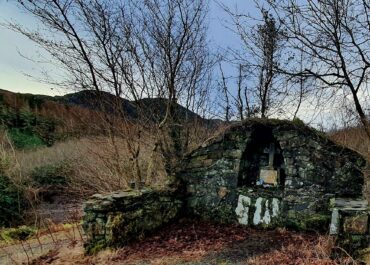Bullaun stone, Legnahoory, Co. Donegal
In the rugged landscape of Legnahoory, County Donegal, a series of mysterious stone depressions bears silent witness to centuries of forgotten ritual.
Bullaun stone, Legnahoory, Co. Donegal
These three circular hollows, carved into the natural rock outcrop, are believed to be bullaun stones; ancient features that once served the spiritual and practical needs of early Irish communities. The westernmost depression measures 21 centimetres across and plunges 9 centimetres deep into the weathered stone. Moving eastward, you’ll find a second, shallower basin of similar diameter but only 3 centimetres deep, its base worn perfectly flat through countless years of use. A third depression lies 20 metres further east, matching its neighbour’s flat bottom but measuring just 2 centimetres in depth.
These enigmatic stone basins, documented during the Archaeological Survey of County Donegal in 1983, represent a tradition that spans from early Christian times through to the medieval period. Bullaun stones like these were typically used for grinding grain, herbs, or minerals, though many acquired sacred significance over time. Local folklore often attributes healing properties to the rainwater that collects in these depressions, with different stones said to cure various ailments from warts to toothaches.
The furze-covered outcrop surrounding these known examples hints at the possibility of more undiscovered features hidden beneath the wild growth. Such sites are relatively common across Ireland, yet each tells its own story of the communities that created and used them. Whether serving as primitive mortars for food preparation, tools for metalworking, or vessels for holy water, these simple depressions connect modern visitors to the daily lives and beliefs of those who shaped this landscape long before written records began.


